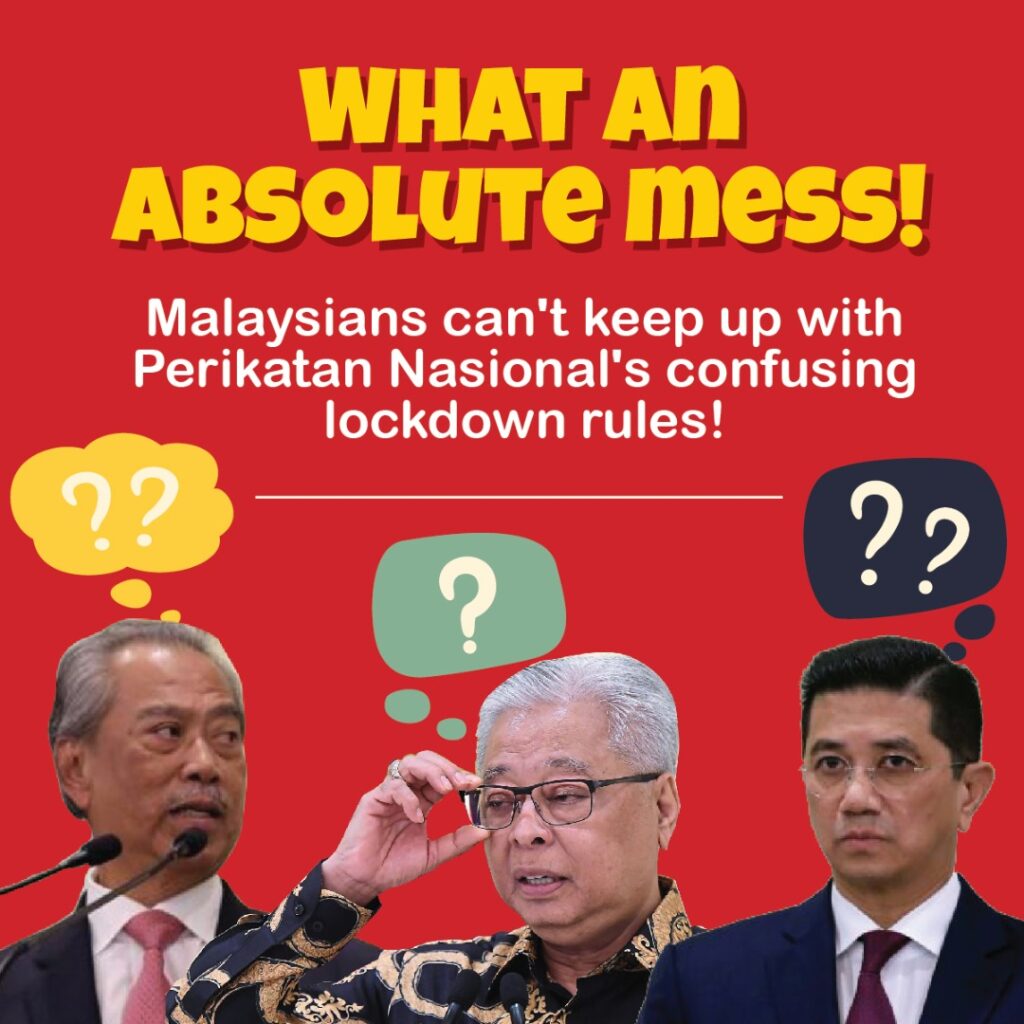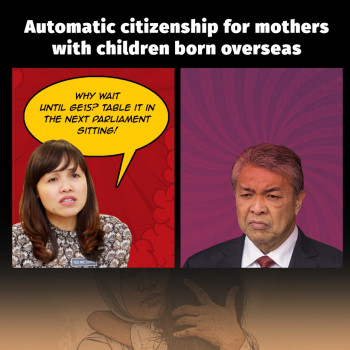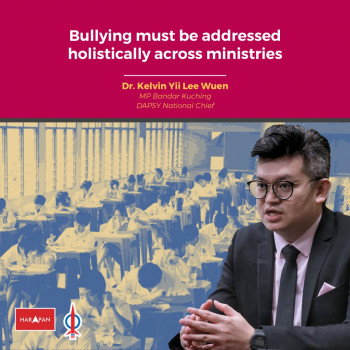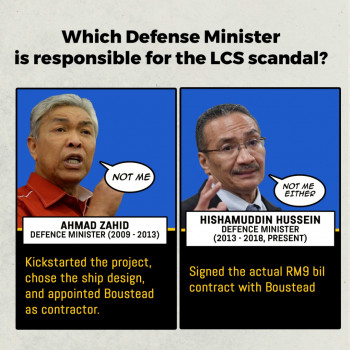
Confusion and contradictions at MITI and the National Security Council (NSC)
On the 20th of October, 2020, the Senior Minister and Minister of Defence, Ismail Sabri, announced that all workers in management and supervisory positions in the private and public sectors would Work From Home (WFH) starting on the 22nd of October, 2020.
Since this announcement, there has been utter confusion between the Ministry of International Trade and Industry (MITI) and the National Security Council (NSC) on the policies and Standard Operating Procedures (SOPs) for the areas under the Conditional Movement Control Order (CMCO) namely the Klang Valley and Sabah. The announcements by the two Ministers, Azmin Ali and Ismail Sabri, have raised more questions than answers.
1) Which are sectors and industries which are affected by this Work From Home (WFH) order?
The initial understanding was that this directive would affect ALL sectors in the private sector. This is based on the press statement issued by MITI Minister, Azmin Ali, on the 21st of October which mentions the 3.1 million workers in the Klang Valley and Sabah that are in the manufacturing, services and construction sectors.[1]
But in his press conference at 6pm on the 21st of October, Ismail Sabri stated that only “industries and the civil service” will be affected. He was also reported to have said that the retail sector does not fall under “industries” which contradicts MITI’s earlier statement on the same day.[2]
2) Who exactly are the management and supervisory staff? What is MITI’s definition?
Many companies are still not sure of who exactly constitutes management and supervisory staff. This is especially relevant in the professional services sector where almost everyone beyond the entry level would have at least some supervisory responsibilities. MITI may be more familiar with the manufacturing sector where the majority of the staff work on the factory floor and where the ratio of supervisors to blue collar workers is very high. The same model cannot be used in the accounting, legal, IT and financial services sectors because of the higher number of white collar workers.
3) For the 10% of management and supervisory staff who can come in to work, what are the detailed working arrangements? (e.g. working in shifts, working for 4 hours but not from 10am to 2pm necessarily, etc…)
MITI probably relented from pressure from the chambers of commerce and industry groups when it allowed 10% of management and supervisory staff including those with responsibilities in accounting, finance, administration, legal, planning and ICT to come to the office from 10am to 2pm for 3 days a week. It is not stated whether a company can adjust these working hours e.g. from 9am to 1pm or from 12pm to 4pm. It is also not clear if companies can rotate the staff who can come into the office for 4 hours a day, 3 days a week. In an interview with Astro Awani, the Deputy Secretary General of MITI, Norazman Ayob, did clarify to say that the companies can pick and choose how they want to assign their management staff to come into the office on a rotation basis but this was not incorporated into the MITI media statement.[3]
In addition, this working arrangement for the supervisory staff does not take into account manufacturing facilities which have to operate their plants on a 24/7 basis. Limiting the working hours from 10am to 2pm would not work for the supervisory staff which have to oversee different shifts at different times in a manufacturing facility.
4) What about those companies which cannot function properly with only 10% of management and supervisory staff at the office and working only 4 hours for 3 days a week?
MITI’s directive of only allowing 10% of management and supervisory staff to come into the office to work may disrupt the operations of companies in certain sectors. This is especially relevant for the sectors where management and supervisory staff are required to have face to face engagement with their customers for example in financial services and sales.
Will MITI make exceptions for sectors which can demonstrate that they cannot function properly with only 10% of management and supervisory staff working at the office?
5) What about small businesses with less than 10 employees?
There were also questions directed at MITI’s social media asking about companies with less than 10 staff. Does this mean that for these companies, no management or supervisory staff can work at the office?
6) Are swab tests for those who still have to go to work mandatory? Or only for those in the red zones? Or only for certain categories of workers or industries?
One of the major areas of confusion was whether staff who cannot work from home needed to undergo swab tests before coming to the office to work. This issue was not addressed in the MITI media statement and was only subsequent clarified by Ismail Sabri in his media conference. The COVID 19 swab tests was only compulsory for those workers in the construction and security sectors and those workers with symptoms. For workers in the red zones who have to go to the office, it is not mandatory but they are highly encouraged to go for a swab test. (See Figure 1 below)
Because this clarification only came out yesterday evening, many companies had already made arrangements for their staff to be tested. This is an additional cost to companies which are already under financial pressures because of the COVID pandemic.
In addition, for those who want to claim the swab test expense from SOCSO (max of RM150 per test), they can only go to ONE panel clinic in the entire country which is the BP chain of health clinics.[4] The number of panel clinics should be increased so that bottlenecks can be minimized and more clinics can offer their COVID testing services.
Figure 1: SWAB tests criteria for the areas under CMCO (starting 22nd October 2020)

7) Where are the red zones exactly?
It is also not clear which districts / areas are considered as red zones by the National Security Council (NSC) for the purposes of testing. For example, Figure 2 below shows that there are 5 districts (“daerahs) which are considered red zones in Selangor – Petaling, Hulu Langat, Gombak, Klang, Sepang and Kuala Langat.
Figure 2: Districts classified as red, yellow and green zones in Peninsular Malaysia (as of 21st October 2020)

But according to Figure 3 below, not all of the sub-districts (“mukim) are classified as red zones within the red zone districts. For example, the Kapar mukim in the Klang district is a yellow zone and only the Kajang mukim in the Hulu Langat district is classified as a red zone. Does this mean that those who are in the Cheras mukim in Hulu Langat (a yellow zone) are not encouraged to go for swab tests and only those who are working in the Kajang mukim should go for the swab tests?
In addition, do companies know the exact boundaries of these mukims / sub-districts? As the Member of Parliament for Bangi, I am not 100% sure where the boundaries of the Cheras mukim in Hulu Langat starts and ends and where the boundaries of the Kajang mukim starts and ends. I am quite certain that many companies will also be confused as to the mukim they are located in.
Figure 3: Classification of mukims (sub-districts) according to green, yellow and red zones (as of 21st of October 2020)

8) What is the punishment for non-compliance?
MITI has announced that they will be doing spot checks on companies to make sure that they comply with the conditions announced under the CMCO. But is it fair to punish companies who are not able to comply to these conditions because of the lack of details on the part of MITI and contradictory statements between MITI and the NSC?
I can only hope that companies will not be punished as a result of unclear instructions on the part of MITI and the NSC.
9) Where are the detailed FAQs by MITI?

MITI’s statement on the 21st of October raised more questions than answers. This is why MITI should have issued a detailed FAQ to answer specific questions from the companies affected by this directive. Some details were apparently given by Deputy Secretary General Norazman during an industry engagement session on the 21st of October. But because these details are not confirmed by MITI, companies cannot assume that this is the official position of the government. MITI still has a lot of work to do to answer these questions by issuing a detailed FAQ.
The confusion and the lack of clarity on the part of MITI and the NSC means that employers and businesses will be operating under a cloud of confusion when this directive starts on the 22nd of October 2020.
Ong Kian Ming,
MP for Bangi
[1] https://www.miti.gov.my/miti/resources/Media%20Release/Siaran_Media_-_Sektor_Ekonomi_Disaran_Untuk_Mempertingkatkan_Amalan_Bekerja_Dari_Rumah_Bagi_Kakitangan_Pengurusan_Dan_Penyeliaan.pdf
[2] https://www.malaysiakini.com/news/547506
[3] https://www.youtube.com/watch?v=cbAszhN75hc&feature=youtu.be
[4] https://psp.perkeso.gov.my/direktori-panel-perkhidmatan.html



